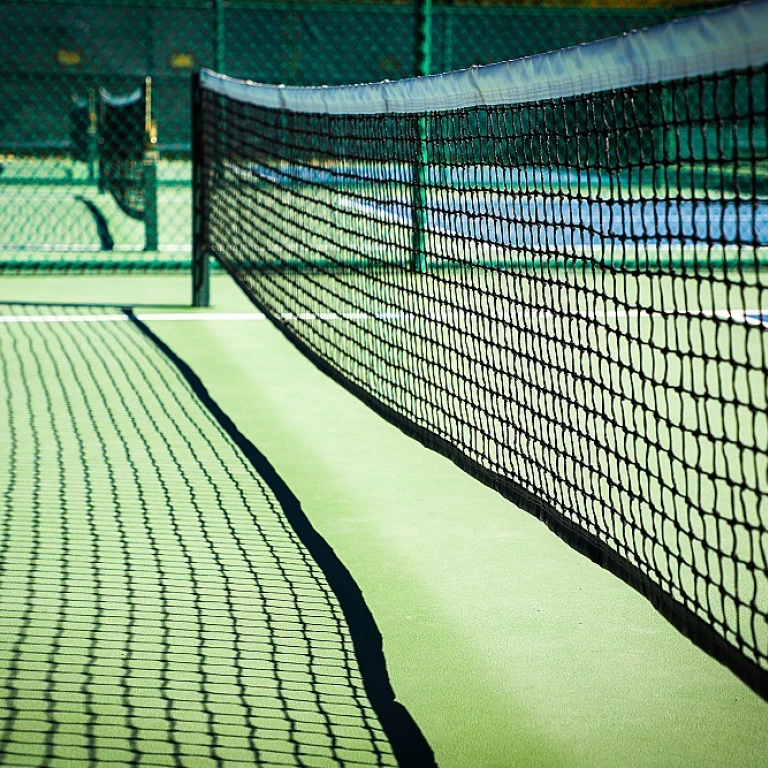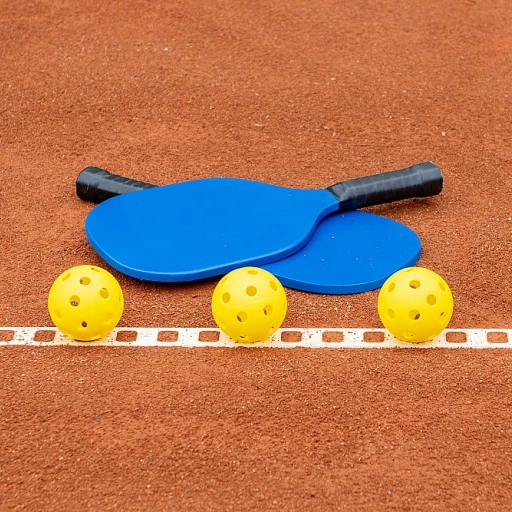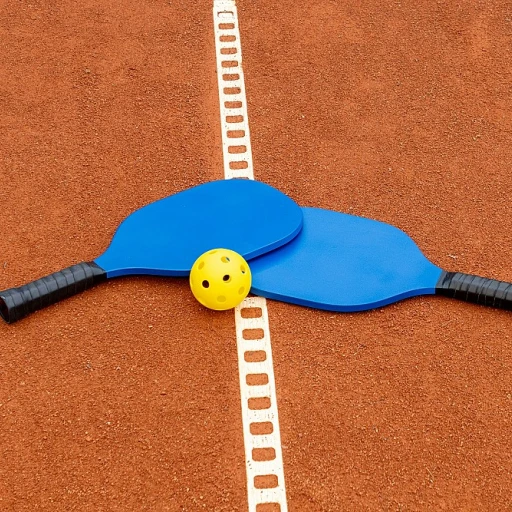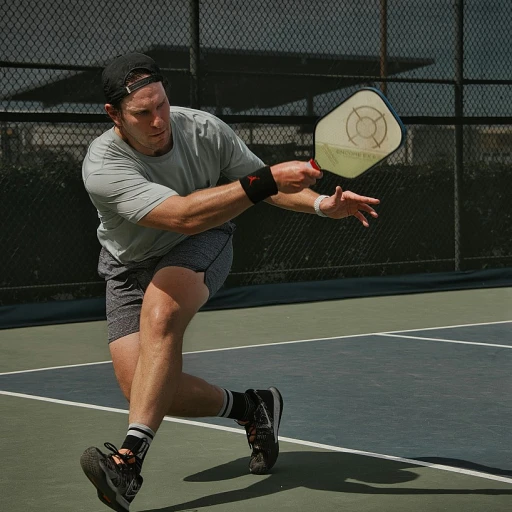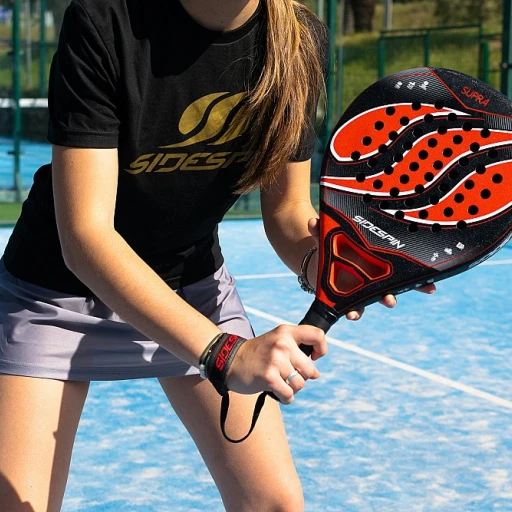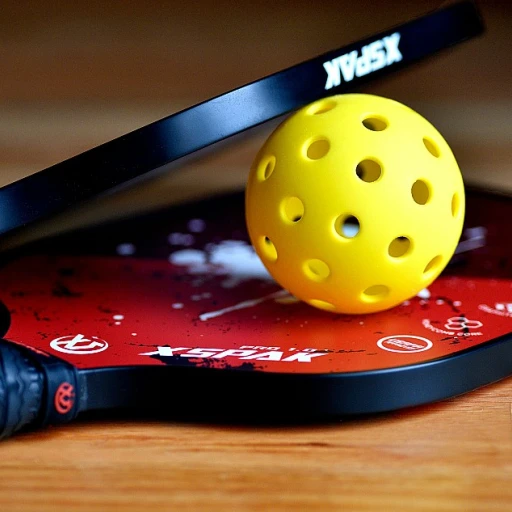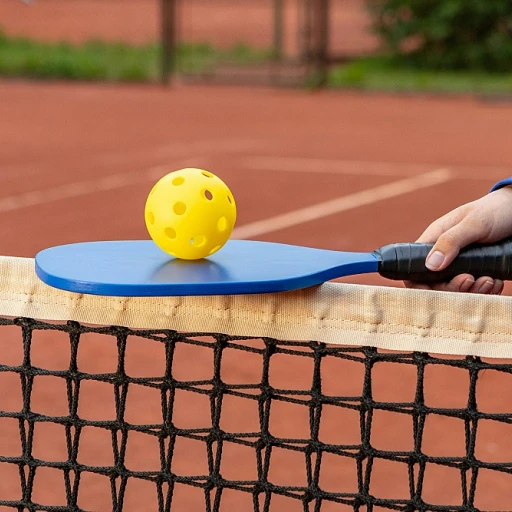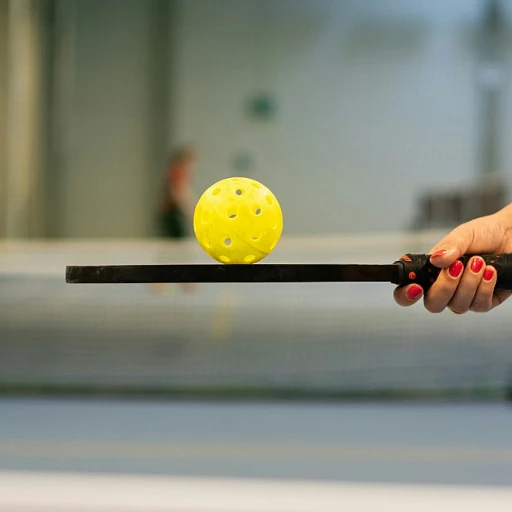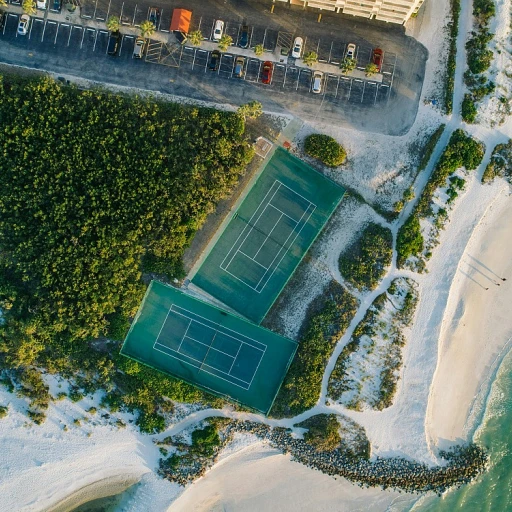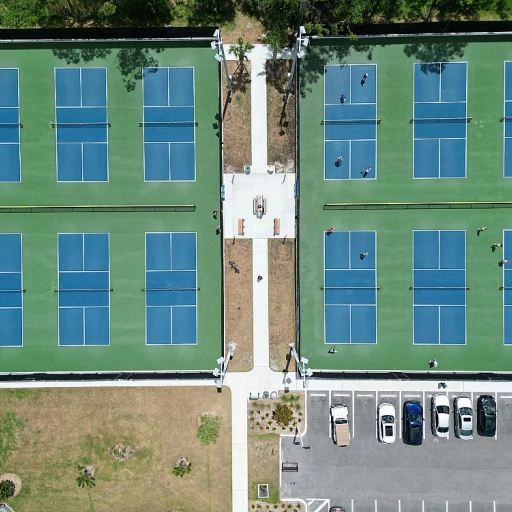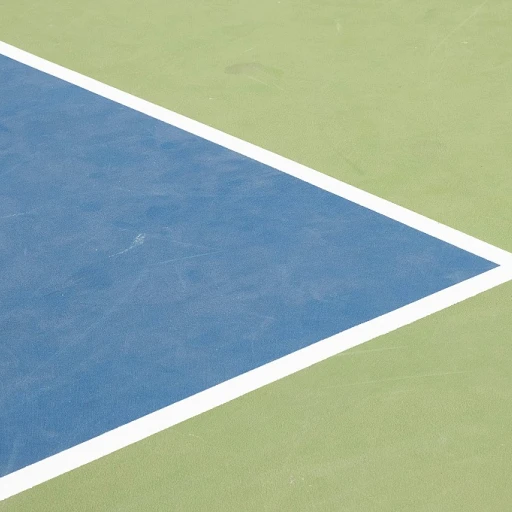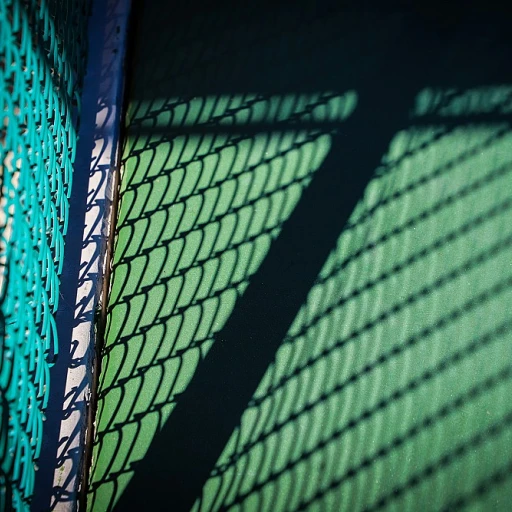
The Basics of Pickleball Construction
Understanding the Core Elements
Pickleball, a sport that has gained immense popularity in recent years, revolves around a seemingly simple yet intricately designed ball. The construction of a pickleball is fundamental to the game, influencing everything from the bounce to the speed of play. These balls are typically made from durable plastic, ensuring they can withstand the rigors of both indoor and outdoor play.
The Role of Design in Play
Pickleballs are characterized by their unique design, featuring a series of holes that are crucial for their performance. These holes, varying in number and size, help control the ball's flight and stability during play. The design is not just about aesthetics; it directly impacts how the ball behaves on the court, affecting both the players' strategies and the overall dynamics of the game.
Construction and Material Considerations
The materials used in manufacturing pickleballs are carefully selected to balance durability and performance. While plastic is the primary material, the specific type and quality can vary, influencing factors like weight and bounce. This is particularly important when considering the differences between indoor and outdoor pickleballs, which are designed to cater to the specific conditions of each environment.
For those interested in optimizing their game, understanding the composition of a pickleball is just as crucial as knowing what to eat between games. The right ball can enhance your play, making it essential to choose wisely based on your playing conditions and personal preferences.
Materials Used in Pickleball Manufacturing
Exploring the Core Materials of Pickleballs
Understanding the material composition of pickleballs is a fundamental aspect that can influence your game. Pickleballs are not just any ordinary balls; they are carefully crafted to enhance play and meet the sport's specific requirements. Let's dive into the materials that make these balls unique.
The primary material used in manufacturing pickleballs is plastic, which ensures they are lightweight yet durable. This plastic construction allows the balls to exhibit a consistent bounce, which is crucial for maintaining a steady game rhythm. The USA Pickleball standards dictate that these balls should provide a balance between durability and performance.
Differences in Material for Indoor and Outdoor Use
When it comes to indoor and outdoor pickleballs, the materials further differentiate based on their specific usage environment. Understanding essential gear for pickleball can enhance practice sessions significantly.
- Indoor pickleballs: These are typically made from softer plastic. Such material reduces noise and plays gentler on indoor surfaces, offering less impact during a pickleball play.
- Outdoor pickleballs: These are constructed from harder plastic. This makes them more resilient to wear and tear from rough outdoor surfaces, providing an extended lifespan compared to their indoor counterparts.
The Role of Holes in Pickleball Design
The unique hole configuration in pickleballs also plays a critical role. Indoor balls generally have fewer but larger holes, enhancing their flight stability in wind-protected environments like a pickleball court. In contrast, outdoor balls have more and smaller holes, which helps them to remain stable in windy conditions.
As you delve deeper into the sport, recognizing how different material compositions affect your game allows you to choose the perfect ball for your style and setting.
Indoor vs. Outdoor Pickleballs
Comparing Indoor and Outdoor Variants of the Sport
In pickleball, not all balls are created equal. The key distinction is between indoor and outdoor pickleballs, with each type specifically designed to enhance play in different environments. Indoor pickleballs are characterized by having fewer holes, typically around 26. These holes are larger, which facilitates better control and maneuverability on an indoor court. Because indoor settings often have smoother surfaces, these balls are created to ensure they don’t skid or bounce unpredictably, allowing for a more controlled game. The material used for indoor balls tends to be a softer plastic that contributes to a slightly less bouncy experience, a feature many indoor players appreciate. On the other hand, outdoor pickleballs are crafted with durability in mind, suitable for more rugged and uneven court surfaces. These balls have approximately 40 smaller holes, which helps in withstanding elements such as wind, common to outdoor play. Due to the sturdier conditions outdoors, the materials used tend to be harder plastics, ensuring the balls sustain less wear and tear. As a result, their design ensures a consistent bounce even when faced with the variabilities of outdoor environments. The USA Pickleball Association plays a pivotal role in standardizing these features, ensuring both indoor and outdoor balls meet requirements suitable for official play. The composition of these pickleballs significantly influences the gameplay, whether one is volleying in the volley zone with an outdoor pickleball or seeking precision with indoor variants. Understanding the differences between these pickleball balls will allow you to choose the right equipment tailored to your playing style and environment. Whether you're a casual player or gearing up for competitive play, selecting the correct ball will enhance your enjoyment and performance on the court. For more insights on the joys of pickleball and detailed equipment choices, explore this article on the joy of pickleball.The Evolution of Pickleball Design
The Changing Face of Pickleball Design
The design of pickleballs has undergone significant evolution since the sport's inception. Early iterations of the ball were simple and closely resembled the wiffle ball, but modern advancements have led to the development of highly specialized pickleball balls used in today's play. Several factors have driven the change in pickleball designs:- Material Improvements: Initial ball designs primarily utilized basic plastic, but advancements in material science have allowed for more durable plastics that improve the ball's lifespan and performance on the court.
- Enhanced Aerodynamics: Manufacturers have experimented with hole patterns and placement to improve the aerodynamics of the balls. Circular holes are meticulously engineered to reduce air resistance and provide a consistent bounce and play experience. These features are crucial regardless of whether the game is played indoor or outdoor.
- Indoor vs. Outdoor Balls: The USA Pickleball Association and other governing bodies have set standards that distinguish indoor pickleballs from outdoor pickleballs. Indoor balls typically have smaller, rounder holes and are made of softer material to provide better control and lessen bounce. Conversely, outdoor balls are designed for durability, with larger holes to resist wind effects, making them suitable for the tougher conditions of outdoor play.
- Development of Specialized Equipment: Just as pickleball paddles have embraced innovations like carbon fiber for enhanced play, so too have balls integrated new technology and materials to refine game quality.
How Pickleball Composition Affects Play
The Science of Pickleball Performance
The composition of pickleballs takes center stage when discussing how they affect play on the court. Thanks to an assortment of carefully selected materials, these balls are crafted to cater to the unique demands of different game environments and player preferences.
Material Influence on Bounce and Control
Pickleballs, typically made from plastic, vary in their construction to influence how they bounce and react during play. Indoor balls often possess fewer holes and are lighter, lending to a softer playstyle that offers more precision and control, perfect for inside court settings. Conversely, outdoor pickleballs are specifically made to withstand rougher surfaces and environmental factors, featuring more or larger holes to maintain optimal flight path and bounce even when playing outside amidst wind and sunlight.
Design Impact on Play
The design of the balls also plays a crucial role in the dynamics of the game. Outdoor balls are heavier, which provides a predictable bounce and reaction on harder surfaces, aligning with the requirements set by the USA Pickleball Association for official games. This distinction in design between indoor and outdoor pickleballs ensures players experience a game suited to the particular playing surface, allowing for better anticipation and strategy.
Adaptation and Choice for Players
For pickleball players, understanding how the material and design of their ball choices affect engagement is vital. As players enhance their skills and become more attuned to nuances in the game, selecting the appropriate ball type becomes just as important as choosing the right pickleball paddle. The interplay between the materials and construction of the ball has a direct impact on factors like speed of play, control, and even player enjoyment.
Making an informed decision about the type of pickleball to use can significantly enhance a player's performance and compatibility with different courts, be it a professional venue or a community one. As the governing body of the sport ensures standardization and quality, players can focus on refining their tactics, whether near the net in the volley zone or at the baseline.
Choosing the Right Pickleball for Your Game
Choosing the Ideal Pickleball for Optimal Game Performance
Selecting the appropriate pickleball for your game can significantly impact your performance on the court. When deciding which ball to opt for, players must consider several factors including where the game will be played and the ball's materials, construction, and bounce. The variety in pickleball composition caters to different play styles and environmental conditions, making an informed choice essential.- Indoor vs. Outdoor Conditions: Indoor pickleballs and outdoor pickleballs differ primarily in the number and size of the holes they have. Indoor pickleballs usually feature larger holes, reducing their susceptibility to wind, which can enhance stability during play. Conversely, outdoor pickleballs are constructed with smaller holes to ensure they maintain their trajectory in windy conditions. The choice between indoor and outdoor balls is contingent on your court environment.
- Material and Durability: The materials used in pickleball manufacturing, often hard and durable plastic, play a significant role in the ball’s performance. Outdoor balls, generally made of thicker plastic, are designed to withstand rougher surfaces and environmental wear-and-tear. On the other hand, indoor balls are optimized for smooth court surfaces and require a lighter touch.
- Impact of Design on Play: The evolution of pickleball design has led to variations in performance characteristics such as bounce and control. Some pickleballs made with different kinds of plastic or designed with particular hole patterns affect how the ball reacts when struck by a paddle or how it moves across the pickleball court. Understanding these nuances can aid players in choosing a ball that matches their personal style or the requirements of their sport-specific league, like USA Pickleball regulations.
- Governing Body Recommendations: Organizations such as the Pickleball Association may offer guidance on approved balls for official play. Choosing certified equipment ensures compliance with any league standards and promotes fairness in competition.

